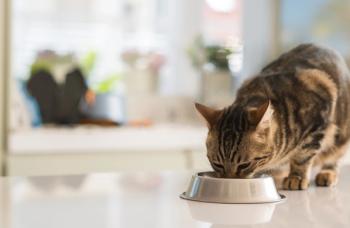
In-house FeLV and FIV testing: How do the newest screening tests compare?
A positive result can have a dramatic impact on a cat and its owners. These researchers set out to determine the reliability of four in-clinic veterinary products.
Shutterstock.comWhy they did it
Control of retroviruses like feline leukemia virus (FeLV) and feline immunodeficiency virus (FIV) relies on accurate identification of infected cats. Point-of-care tests are often used to screen cats for infection and the decision to segregate or even euthanize infected cats requires confidence in in-house testing results. The authors of this new study evaluate the performance of new combination point-of-care tests for FeLV and FIV in the clinical setting.
What they did
The study authors evaluated surplus blood samples submitted by animal shelters, veterinary clinics and cat research colonies to a university diagnostic laboratory. All samples were coded to facilitate observer blinding.
Only those samples with concordant positive results on two different microtiter enzyme-linked immunosorbent assays (ELISAs) developed to determine the presence of the FeLV p27 antigen (Ag) were categorized as having true FeLV infection. The final sample set included 154 antigen-negative samples and 146 antigen-positive samples.
Virus isolation on peripheral blood mononuclear cells was used to determine true FIV positive status and medical histories were evaluated to ensure that none of the cats had received an FIV vaccine. The final sample set included 97 FIV-negative samples and 94 FIV-positive samples.
All samples were then tested on four different point-of-care combination tests:
• The SNAP Combo FeLV Ag/FIV Ab Test (bidirectional flow ELISA-IDEXX)
• Witness FeLV-FIV Test Kit (lateral flow immunochromatography with colloidal gold-Zoetis)
• Anigen Rapid FIV Ab/FeLV Ag Test Kit (lateral flow immunochromatography with colloidal gold-Bionote)
• VetScan Feline FeLV/FIV Rapid Test (lateral flow immunochromatography with colloidal gold-Abaxis)
All tests were performed simultaneously in a randomized fashion and in batches of six. Results were assessed by two test observers who were blinded to the sample status and the other observer's interpretation.
What they found
The authors found that the SNAP test was significantly more sensitive and specific than the other tests in correctly identifying FeLV status in all 300 samples, while VetScan was found to be the least specific. With respect to FIV, there were no significant differences among all four tests.
It is important to note, however, that the positive predictive value for all tests, with the exception of the SNAP test, was low and would result in a false-positive result in 83% to 94% of cases in a low-risk population of cats with a 1% seroprevalence for FeLV. In other words, tests with a low positive predictive value such as this would give a positive result 83% to 94% of the time in cats that actually did not have the disease.
While the positive predictive value was better at determining true FIV status, all but the Witness test would still result in a false-positive result in approximately half of the cats tested if used in a low risk population with a 1% FIV seroprevalence.
The authors also caution that disease pathogenesis, such as regressive infections and lack of circulating p27 antigen in some cats with FeLV infection, can complicate accurate diagnosis. Further, the use of FIV vaccines may also complicate accurate point-of-care testing because distinction between infection-induced versus vaccine-induced antibodies is difficult.
Take-home message
While the SNAP test performed best with respect to accurately diagnosing FeLV, there were no clear advantages for FIV testing. These results underscore the importance of confirmatory testing in any case with a positive result, particularly among cats at low risk and before any decision is made to isolate or euthanize an affected cat.
Levy JK, Crawford PC, Tucker SJ. Performance of 4 point-of-care screening tests for feline leukemia virus and feline immunodeficiency virus. J Vet Intern Med 2017. (Epub ahead of print.)
Link to article:
Newsletter
From exam room tips to practice management insights, get trusted veterinary news delivered straight to your inbox—subscribe to dvm360.






